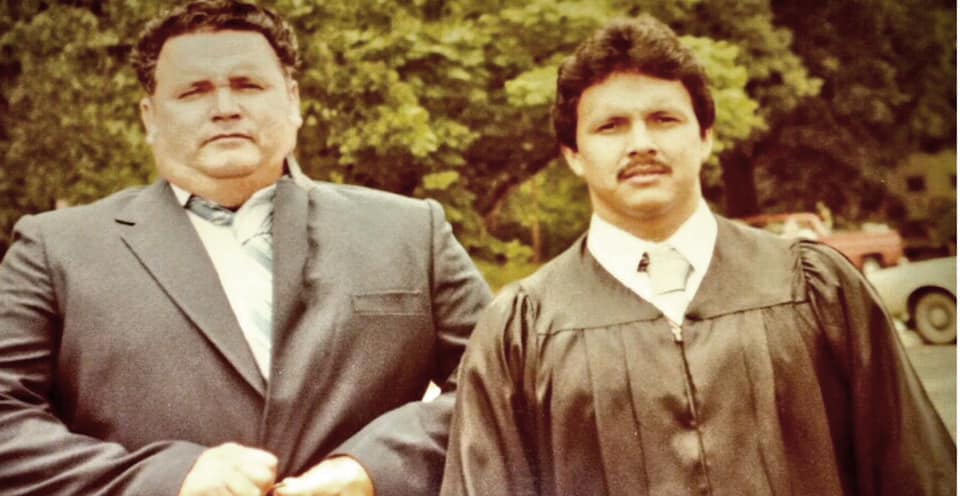|
(3/3)I continued to do odd jobs after high school because I still had to help my family. I worked in the oil fields with Exxon Mobile for 18 months following graduation, but I started noticing the older gentlemen were missing fingers. I looked at my ten toes and ten fingers and decided it was time to move on to college. I applied for scholarships and St. Edwards University in Texas was the first one to respond.
Going to school in Austin really opened my eyes to the possibilities of who I could become. When I went to the financial aid office, the Financial Aid Director was Mexican. Her husband was a controller for the city. The Chief of Police was Mexican. When I went to open a bank account, the bank’s president was Mexican. In Immokalee, 90% of businesses and leadership positions were predominantly white at that time. I took that as motivation and became a sponge. My junior and senior year, the Tribe was able to provide me with some financial aid, which was a huge help at that time. After graduation, I imagined I would be a P.E. teacher and eventually coach a sports team at the local high school since I had been so involved myself. I had just completed my final interview and was set to start teaching in 3 weeks when the newly elected President of the Seminole Tribe reached out to me. He asked me to be a part of his team in the recently built Seminole Casino. I never imagined myself in gaming, but I was sold once I learned more about gaming and our history. I didn’t learn about my Seminole and Mexican history until after college when I started working with the Tribe. It may have been because the Seminoles don’t have a written language and our history has been passed down verbally. All I knew about my culture was from what I learned from my parents and my grandparents. I didn’t learn about the Trail of Tears or even how our land was taken away. The Seminole Tribe used to be spread across Florida and lower Georgia, but by the 1850’s and 60’s, we had less than 200 members. Today we have around 4,300 Seminoles, but our language is still not written. When members of the Seminole Tribe enlisted in the military, they used that as an advantage to communicate across groups during the war just like the Navajo’s did. Luckily, these Seminole code talkers returned home. Tony, a local Seminole tribe member, reflects on his experience leaving and returning to Immokalee.
0 Comments
Leave a Reply. |
AuthorMaria Plata is a Mexican-American writer, educator, and lover of connecting people through storytelling. Archives
March 2021
Categories |



 RSS Feed
RSS Feed
